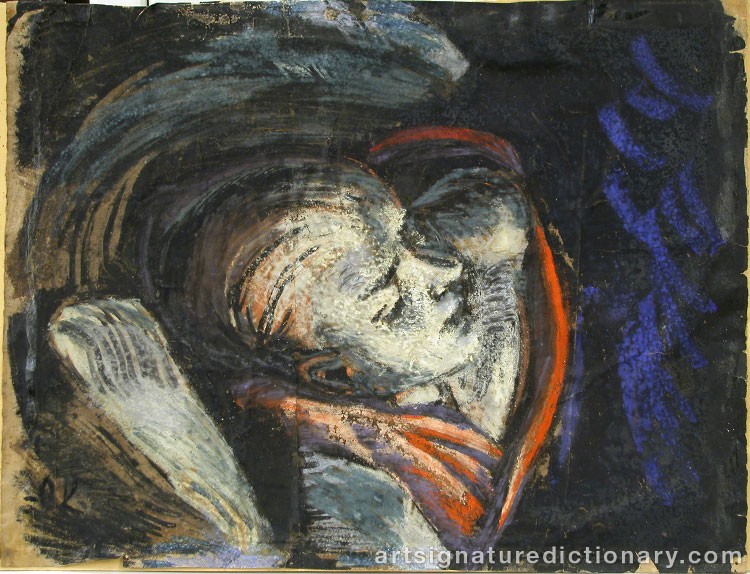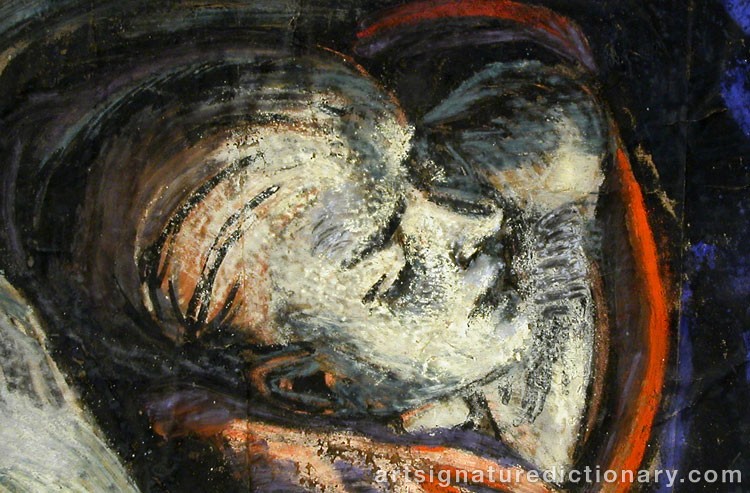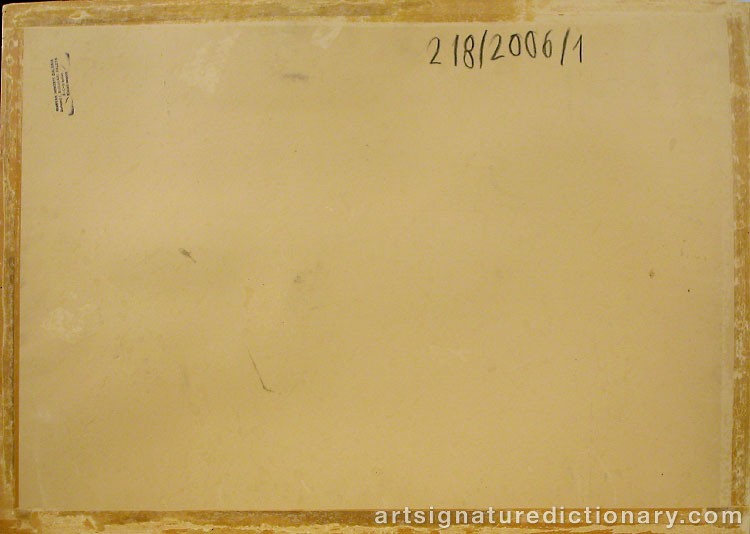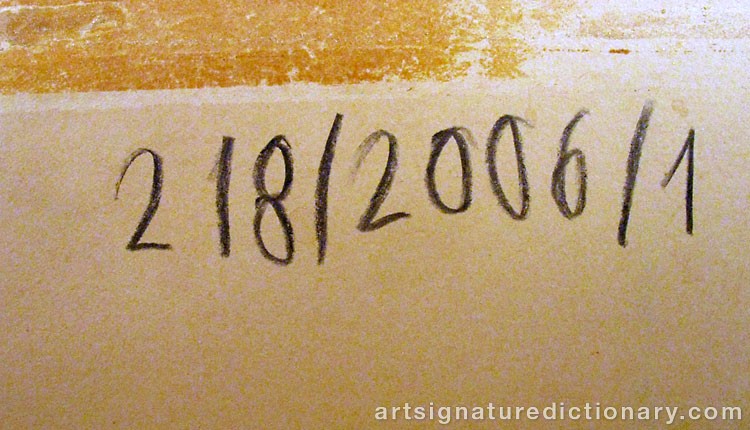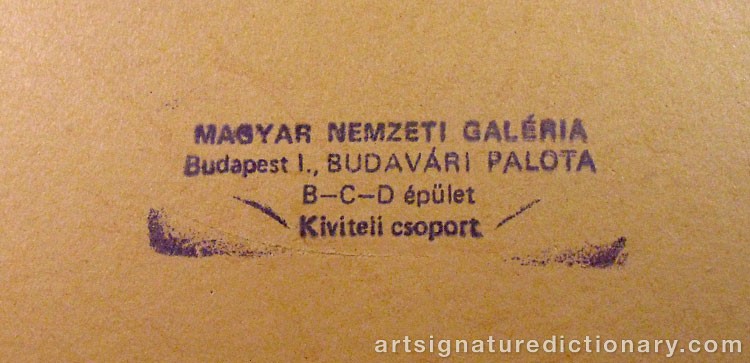Oskar KOKOSCHKA
1886–1980, Austria/Switzerland
Also known as: OK
Signatures & monograms
9 signatures and monograms by Oskar Kokoschka. Compare authentic and documented counterfeit examples to study signature characteristics.

Signature proven counterfeit
Oil on board, signed with monogram "OK". The painting was seized by police in a major auction house in Stockholm in August 2007. According to the auction house a receipt stated Mr. M.Sz. be the submitter and owner of the painting. A folder with provenance documents turned out, on examination, contain manipulated documents. Among others from the National Museum, which states that the painting has undergone a study stating that it is a genuine Oscar Kokoschka painted 1917. In a document, dated June 2002, signed by "IP" Museum of Fine Arts in Budapest recommends he a restoration since the authenticity become certified. And another document from the National Museum in Stockholm declares that the painting is a self portrait of Oscar Kokoschka lying in the hospital bed in 1917. In addition, documents which Mr. M.Sz. gives Mr. H. I. sales mission to find potential buyers for the painting. The painting had earlier in 2006 been presented at both Uppsala Auktionskammare and Stockholms Auktionsverk who refused to sell the painting because of doubts about its authenticity. Bukowski's in Stockholm engages prof. Dr.. Alfred Weidinger for expertifiering of Oscar Kokoschka. He stated that he had seen the painting before, and it is definitely not an Oscar Kokoschka. The painting is also examined by dr. Iris Muller Westerman, Moderna Museet in Stockholm, which shows that the painting is a forgery. The District Court's assessment: The painting is not an original work of Oscar Kokoschka nor signed by him. The crime is serious fraud with intent to lull prospective buyers that this is a genuine work of Oscar Kokoschka. Criminal sanctions, one year in prison.

Signature considered genuine

Signature considered genuine

Signature considered genuine

Signature considered genuine

Signature considered genuine

Signature considered genuine

Signature considered genuine

Signature considered genuine
Explore other artists
Discover other notable artists who were contemporaries of Oskar KOKOSCHKA. These artists worked during the same period, offering valuable insights into artistic movements, signature styles, and authentication practices. Exploring related artists makes it easier to recognize common characteristics and artistic conventions of their era.





